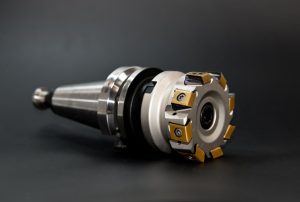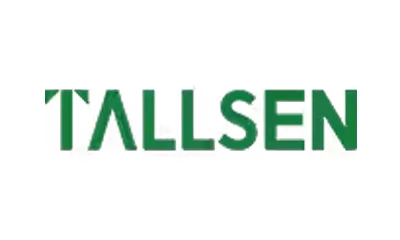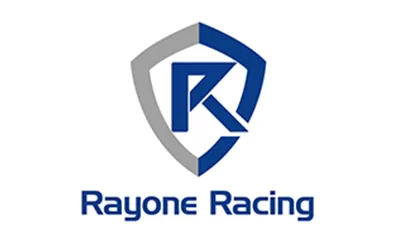Manufacturing finds CNC prototyping particularly useful because the industry needs large amounts of custom metal and plastic parts, most of which are often in complex shapes and structures. A wide range of CNC prototyping machines offers the advantage of having multiple axes that can adjust to difficult angles and help manage materials that are difficult to cut.
What is CNC?
CNC (computer numeric control) prototyping refers to the fabrication of prototypes by using a computer numerical control machine. It is a manufacturing process in which pre-programmed computer software dictates the movement of tools and machinery like drills, mills, routers, grinders, lathes or any combination of them. They are directed to remove unwanted sections from material by machining or cutting it away. Therefore, CNC prototyping is categorized as subtractive manufacturing, the opposite of additive manufacturing, a process that adds successive layers of material to create an object, often referred to as 3D printing.
Manufacturing finds CNC prototyping particularly useful because the industry needs large amounts of custom metal and plastic parts, most of which are often in complex shapes and structures. A wide range of CNC prototyping machines offers the advantage of having multiple axes that can adjust to difficult angles and help manage materials that are difficult to cut.
CNC Advantages
The programming in machines for CNC prototyping incorporates all the exacting, high-speed movements needed to produce the object, and it enables detailed customization. CNC prototyping is becoming increasingly popular as a way to fabricate custom metal parts as well as plastic parts, as it allows the manufacturer to produce complex shapes that would be nearly impossible to create by adopting any other methods. Many industries, especially manufacturers, look to CNC prototyping advantages for production solutions involving custom metal and plastic and any number of machining processes they may need.
Is CNC Prototyping a Right Prototyping Method for Your Products?
CNC prototyping, a typical technology of subtractive manufacturing, together with additive manufacturing represented by 3D printing technology, are the two most common methods for creating a prototype directly from a digital file. However, they have varying circumstances where they should be put into use regarding your desired prototypes and the availability of the technologies. To break down each manufacturing method will help you determine the best prototyping type.
-
How is the complexity of the desired object?
One of the biggest advantages of CNC prototyping is that CNC prototyping provides excellent precision and delivers satisfactory end products in terms of accuracy and tight tolerances. Internal corners of the part will always have a radius due to the shape of the cutting tool, but external surfaces can have sharp edges and can be machined in a delicate manner. However, most geometries of the prototype require the rotation of the part to access the different sides. Some geometries cannot be realized by CNC prototyping as the tools cannot reach all sides of the workpiece. Therefore, the geometrics of the desired prototype will be the most principal limiting factor to determine whether CNC prototyping should be adopted or not. In the event of failure to create the object by using CNC prototyping, additive manufacturing like 3D printing or hybrid manufacturing should be considered.
-
Which materials are to be involved in making the product?
CNC prototyping can deal with a wide range of materials, including plastics and metals, while 3D printing is more focused on plastics. When considering making custom metal parts, CNC prototyping is what you should consider in the first place. Aluminum is one of the most common types of metal used by prototyping companies to create high-quality prototypes in a variety of industries. Aluminum is recyclable, has good protective qualities, and can create effective prototypes for machining. Other commonly used metals include stainless steel, magnesium alloy, zinc alloy titanium, and brass. Moreover, as 3D printing works on powder or resin materials, the strength of the prototype is usually weak. But CNC prototyping can create the prototype with the materials that will be used in the fabrication of the products to determine how the product will look and function.
-
What kind of timeline are you working on?
CNC prototyping is generally more time-saving than other prototyping technologies. Because of this, it is efficient for creating objects in a larger quantity, usually more than 10. CNC prototyping automates fabrication processes so there is no need to worry about worker negligence, time off or errors slowing down the operation. However, CNC prototyping is not the right choice if the desired number of parts reaches a number so large that traditional prototyping method by using tooling and modeling will be more cost-effective and time-saving.
Under What Circumstances Will You Need CNC Prototyping?
Before having a closer look into CNC prototyping, you may need to know what differences there are between CNC prototyping and conventional prototyping, and under what circumstances you may prefer CNC prototyping over conventional prototyping.
CNC prototyping and conventional prototyping aim to and sometimes could realize the same goal. Both of them work with a workpiece and shape it into the desired part. The most fundamental difference between the two is the automation of CNC prototyping versus the wholly manual intervention of conventional prototyping. Speed, production rate, and accuracy are some of the principal advantages of CNC prototyping over conventional prototyping.
In the case of CNC prototyping, a skilled employee programs software to shape the part. With conventional prototyping, a skilled employee takes all the steps to set up and operate the machine. In the manual situation, a highly skilled operator must also set the gears, whereas CNC prototyping does not use gears.
Generally, conventional prototyping costs less and is used for processing items in a small quantity. CNC prototyping suits prototyping for items in a larger quantity. However, which one is practically more cost-effective is not an absolute matter. Under some circumstances, CNC prototyping can be used for processing even one single object, which is often the case in the modern manufacturing industry that value time more highly than money. After all, the speed of CNC prototyping enables manufacturers to make edits, evaluate results, and finalize the prototype, which is far more efficient than methods requiring more manual intervention. Let’s take a hypothetical part for example. If a prototype that needs concave and convex arcs, imperial and metric threads and two tapers of differing degrees is to be created, an automated CNC prototyping machine would use three tools to shape the part, while the conventional machine would require five tools and no doubt more time.
Conventional prototyping and CNC prototyping technologies are both available for most prototyping tasks. Some of these technologies include:
- Drills: A tool or machine with a rotating cutting tip or reciprocating hammer or chisel, used for making holes.
- Lathes: A machine that shapes the workpiece by holding and turning it against a fixed cutting tool.
- Milling Machines: A machine tool in which a horizontal arbor or vertical spindle rotates milling cutters above a horizontal table, which is used to move the workpiece.
New CNC prototyping technologies include some less commonly seen types:
- Electrical/Chemical: The material block is cut using a specific kind of machining style such as electron beam, electro-chemical, electrical discharge, photochemical and ultrasonic.
- Others: Less commonly found technologies of CNC prototyping include such cutting tools as lasers, oxyfuel, plasma torches, and water jets.
The first step of CNC prototyping is to create a three-dimensional model of the desired product with the use of computer-aided design (CAD) software. The prototype image of that component is then transferred to specialized software, which operates through the computer to command the machining tools to cut and shape items identical to the model. When the computer has loaded in a new image for CNC prototyping, it can pull that model up in a repeated manner to produce more of what it is.
What Are the Advantages of CNC Prototyping?
The steady penetration of CNC prototyping into the manufacturing industry results from its irreplaceable and distinct advantages. Some of them are as follows.
More Precision: The digital template and autonomous machining for CNC prototyping practically remove human error and achieve accuracy within 1/1000th.
Reliable Endurance: Machines used for CNC prototyping can usually work around-the-clock daily, at the weekend, and during holidays. They only need to stop when maintenance or repair is required.
High Production and Scalability: After the design parameters and specification are transferred into specialized software, machines used for CNC prototyping can, according to the directives, consistently executes huge quantities and affords flexible scalability.
More Capability: When used in tandem with advanced design software, machines for CNC prototyping can create prototypes that cannot never be replicated by manual manipulation. Even the most skilled engineers are not able to do with conventional machines what advanced software can do with CNC prototyping. Theoretically speaking, CNC prototyping can produce any size, shape or texture needed.
Less Labor: CNC prototyping requires less personnel to execute the production tasks. One skilled operator can run several of the autonomous machines for CNC prototyping, and one programmer can get them loaded with the needed designs. A manual machine requires at least one skilled operator per machine plus usually a supervisor for the group. What can be saved on manpower can be passed along to customers, helping those who adopts CNC prototyping in their manufacturing to achieve a competitive advantage.
Consistent Product Quality: When you choose the advantages of CNC prototyping machines over conventional prototyping machines, the outputs of CNC prototyping match exactly. Even the most talented engineers on a conventional machine will produce components that vary slightly. With CNC prototyping machines, each part is a perfect match to the prototype’s exact specifications.
Lower Costs: The collective result of high speed, efficiency, specialization, precision and most of all, fewer labor hours, all add up to a better bottom line for your business. The lower costs, in turn, can be used to create a competitive advantage and business re-investment. Saving money or making more money is one of the popular benefits of CNC prototyping.
Fewer Headaches: Manual prototyping serves many good purposes, but it remains forever susceptible to the human intervention. You’re probably familiar with the financial and cultural headaches it can cause when there are periods when you’re short-staffed, have people out sick, or on vacation and operators who don’t perform to expectations. CNC prototyping nearly eliminates those concerning issues.
Better Safety: A safer environment comes along with an expedient production process and consistent pieces. CNC prototyping machines are usually completely enclosed, which reduces the risk of flying chips, debris from broken tools, or contact with a spinning tool. While there are operators involved in operating CNC prototyping machines, it’s at a distance from the sharp tools, whereas the operators of conventional manual lathes, drills, punches and other tools come into direct contact with the implement.
Design Retention: Once a design has been transferred into specialized CNC prototyping software and a perfect prototype has been created, the program can easily retrieve the design to run it and create the object again and again. The master file ensures that regardless of external factors such as machine operator changes, the CNC prototyping process produces a spot-on match every time. Moreover, there is no need to keep up with versions of the design that may exist on paper, a flash drive, a disk, other computer or elsewhere.
Low Maintenance: The software of some CNC prototyping machines will automatically update itself when needed, and CNC prototyping machines generally do not require much service other than to change the cutting implements at the proper interval and do some light cleaning. None of the regular maintenance requires professional service, which saves money.
Versatility: CNC prototyping itself creates virtually any component that can be imagined. Some of the models include special features and accessories that further expedite and simplify the prototyping process, for examples touch screens and automated tool changers.
What Should Be Done Before Deciding A CNC Prototyping Service Provider?
Choosing the right provider of CNC prototyping service from hundreds of companies engaged in this industry is the first step to manufacturing quality pieces in production, but it can be daunting sometimes. Since there are different types of CNC prototyping and the kind of work done by various companies is different, it is worth spending some time in choosing a service provider that will meet your manufacturing needs. Here you will learn some of the top factors that you should consider when approaching different prototyping service providers so that you can settle with the best one.
-
Ask to see examples of previous work
Never be lured by the samples offered by a company providing CNC prototyping service. This is especially vital if the samples it offers seem too good to be true. Make sure the company can provide physical samples of prototypes manufactured by itself. Check over the prototypes carefully by examining their surface finish and the level of precision evident in their details. It can also provide you with ideas or insights about the quality of their work. After that, ask the company about the quality control measures that it uses to ensure consistent prototypes’ quality. If possible, ask the company to provide the contact information of a client or two for you to write to or talk to for the purpose of verifying the samples it offers are whether true or whether the client is satisfied or not. Positive reviews and testimonials from clients are excellent proof to verify the quality of service offered by most companies, and CNC prototyping service providers are no exception to this golden rule.
-
Pay an on-site visit to the service provider
Always believe that an on-site visit to the candidates of your CNC prototyping service providers will be worth your time. You could offer to visit the company and have a closer look at its location, façade, staff members, equipment or even the working style. It will help you to decide whether it is trustworthy or not. Moreover, you could take advantage of the visit to have a preliminary discussion with the company about the desired service. In most instances, you could find the incapability of a CNC prototyping service provider during this stage.
-
Ask about customer service and technical support
Bear in mind that CNC prototyping service is about more than cutting and shaping. It’s essential to make sure that the company you select also offers excellent customer care. Before hiring a machinist, ask how the company supports their customers both while parts are being designed and manufactured and afterwards. How they resolve any problems that might arise during the installation process and how they handle parts repair is also of vital importance. Getting everything in writing is a smart choice, from the design at the very beginning to the final appraisal. Never believe without a shadow of doubt the verbal promises of the CNC prototyping service provider. If they are confident in what they will produce, tell them to confirm every single detail in black and white.
-
Strike a balance among timeframe,quality, and pricing
On one hand, you also need to see whether a CNC prototyping service provider can finish the desired task in the scheduled time per your instruction. Some CNC prototyping companies outsource the jobs to other service providers to complete the task on time for their clients. In that case, you need to make sure that there will not be any compromise on the quality of the prototypes they make. This is important if you are not comfortable with outsourcing your project to other companies. On the other hand, the cost of the job should justify the value you are supposed to obtain from a CNC prototyping service provider. A company may risk, without diligent inquiry, paying a tremendous amount of money for subpar products. So, while checking for quality parameters, you are suggested to see if you are comfortable with the cost of the CNC prototyping service provider.
How to Make Best Use of CNC Prototyping Technologies?
CNC prototyping offers a brand new method for the manufacturing industry to create prototypes in an accurate, fast and cost-effective manner. It has profoundly influenced and shaped what the modern manufacturing industry is like. It is strongly suggested that those companies suffering from conventional prototyping consider CNC prototyping and give it a try. The outcomes it brings may exceed your expectations.
However, it should also be understood that CNC prototyping is not everything when existing problems and defects in conventional prototyping are being addressed. It should be acknowledged that CNC prototyping technologies have their own weaknesses and disadvantages. Those who count on CNC prototyping to solve every single problem in the current prototyping process may end up being disappointed and confused.
It is not a zero-sum game in the development of various kinds of prototyping technologies. They are not supposed to, and will never replace one with another. A steadily growing trend in the prototyping is the integration of CNC prototyping technologies and other prototyping methods, for example, the combination of CNC prototyping and 3D printing for example. Be sure to tell your prototyping service provider your demands for your desired prototypes and it will know what technologies should be introduced into the manufacturing process of your prototypes. CNC prototyping is a good, and it can be even better when it is combined with other prototyping technologies.















Leave a Reply